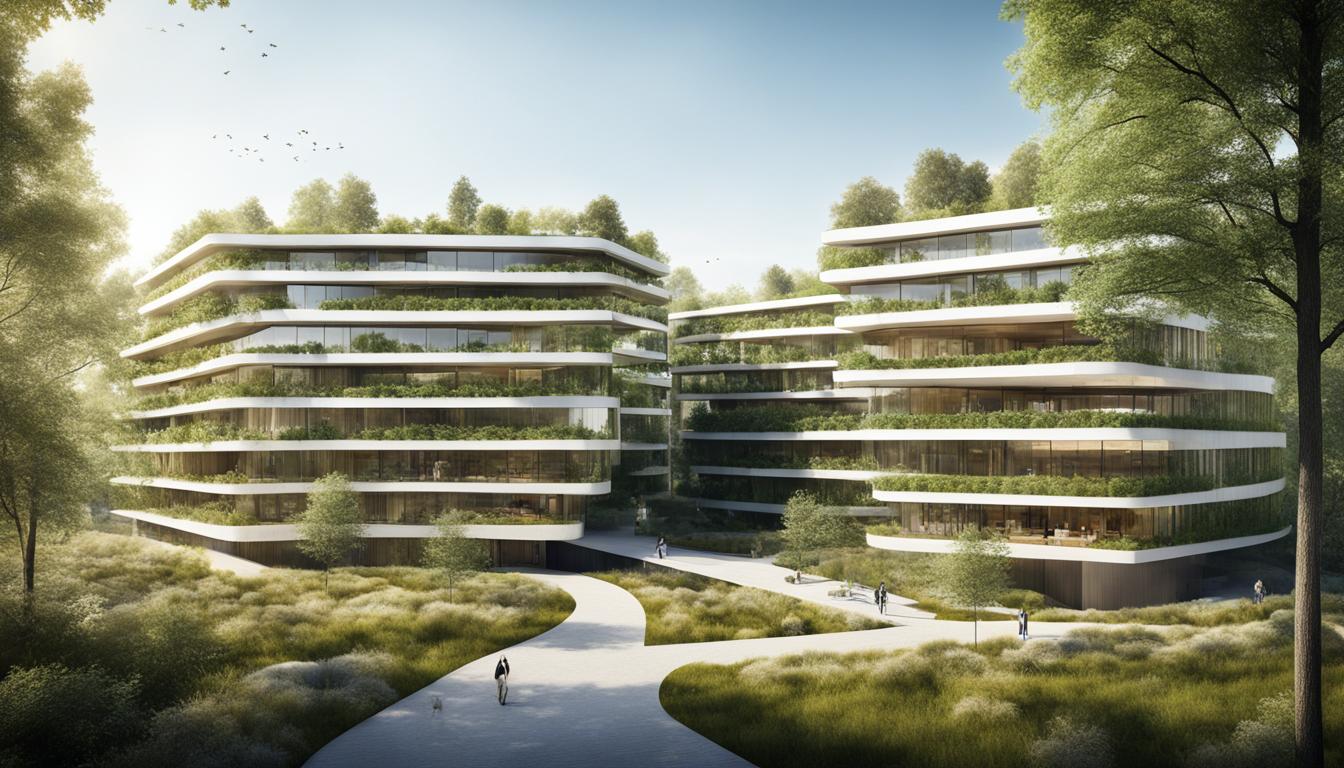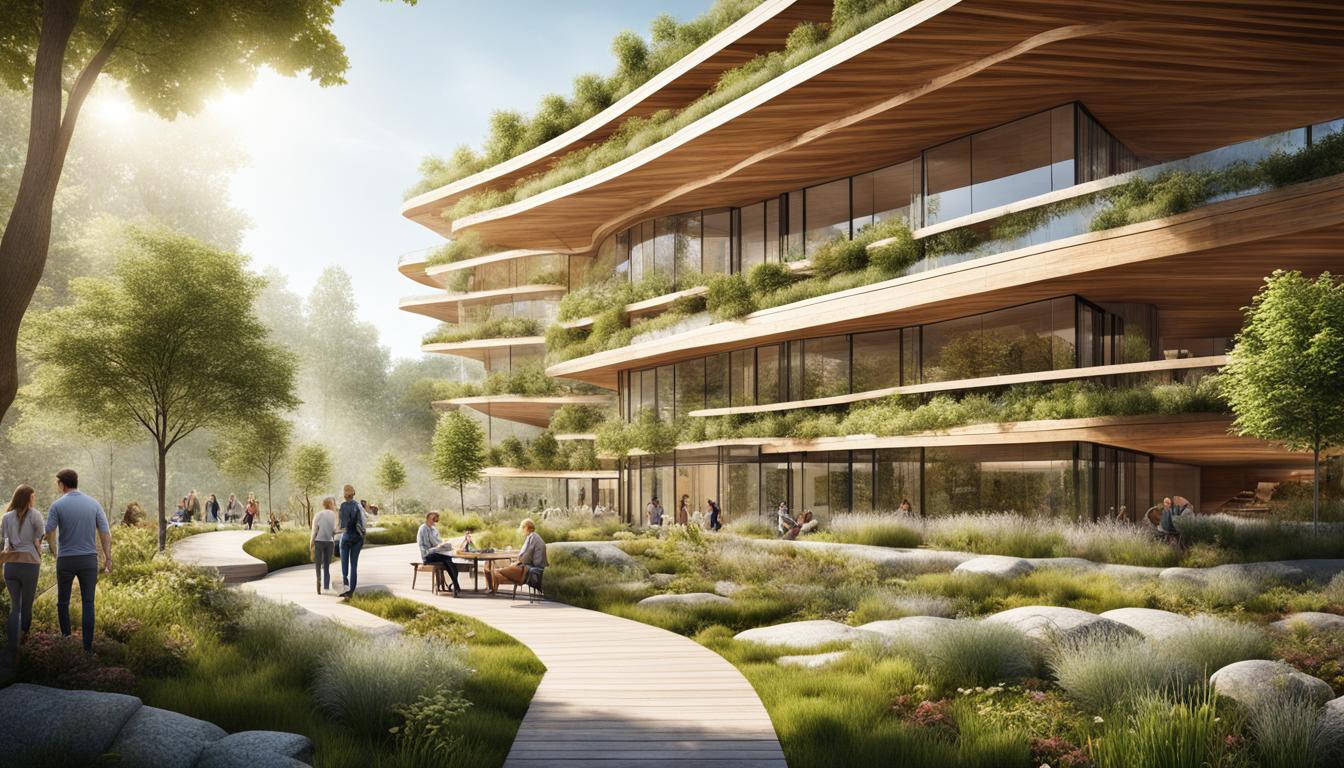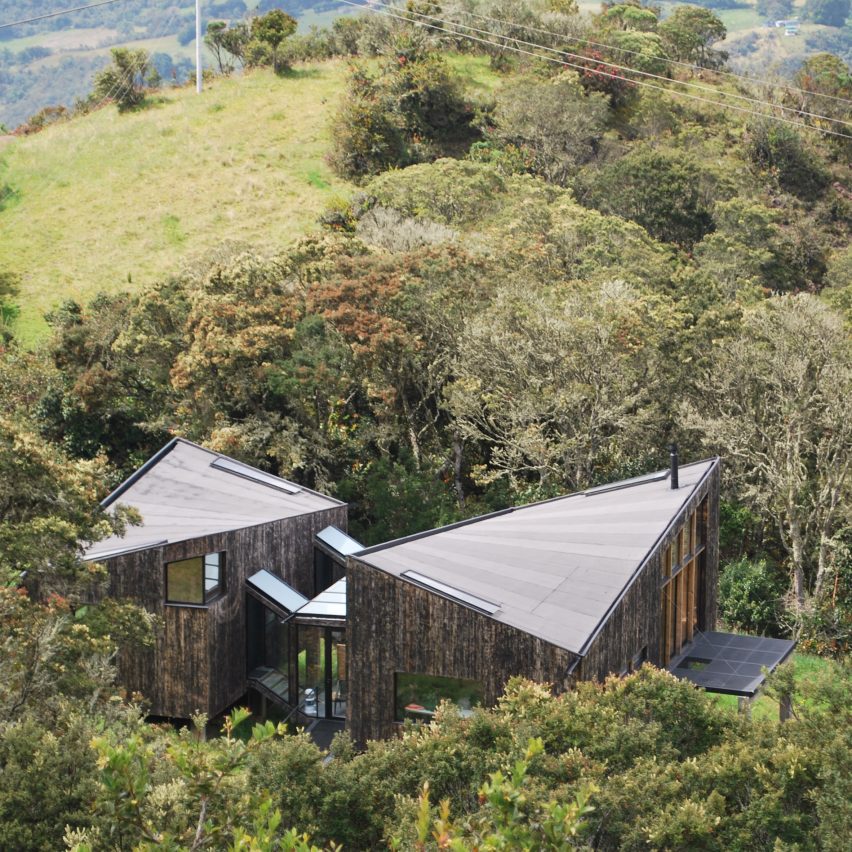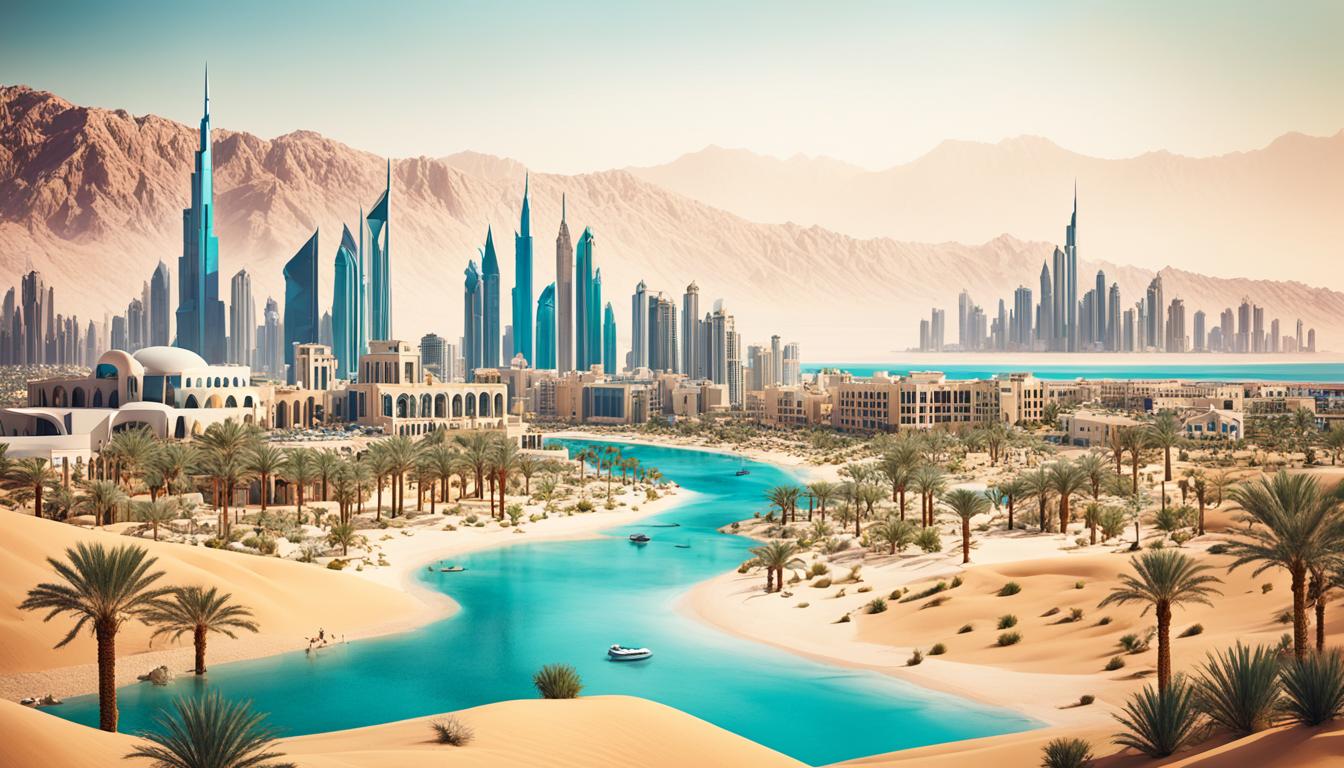Biodiversity in the Built Environment: Case Studies of Success
The value of the services nature gives us is over £44 trillion. This is more than half of the world’s total GDP. But, the way we build is causing a lot of biodiversity loss. This hurts the very ecosystems that support us. With more than half the planet living in cities, our urban designs greatly affect nature.
Our way of making cities now stresses out biodiversity a lot. It’s a big reason for ecosystem services disappearing. This leads to a bad environment and not everyone can enjoy nature in cities. But, if we change how we build and go for more green ways, we can have cities that work well with nature. This will help not only the environment but also us.
Key Takeaways
- The built environment has a significant impact on biodiversity, with the current model causing nearly 30% of global biodiversity loss.
- Ecosystem services provided by nature are valued at over £44 trillion, representing more than half of the global GDP.
- Incorporating sustainable built environment solutions, such as environmental restoration projects and green infrastructure, can help support urban biodiversity.
- Increasing urbanisation is driving the expansion of the built environment into natural ecosystems, further threatening native species and habitats.
- Addressing the biodiversity crisis in cities requires a shift towards more sustainable and nature-friendly approaches to urban planning and development.
Rethinking the Built Environment
We make systems and structures on places where organisms lived. This changes many species’ lives. They face things like not having enough space, greater risk of dying, and meeting humans more often. Losing different types of life affects nature and us. Nature brings value in economic and other ways. For example, it gives us trees for wood, clean things to breathe and drink, places to grow food, helps plants reproduce, and prevents floods.
Impact on Biodiversity
The built environment today depends on a system that uses up, makes, and throws away a lot. This harms biodiversity, the variety of living things. To care better for nature, we need to change how we build. This means using things that last long, making things easy to take apart and put together again, and choosing materials that are good for the earth and us. But many places still need to work on this.
The “Take-Make-Waste” Model
The way things are built now causes big problems for nature and where animals live. This happens when we keep taking things, making new stuff, and throwing away the old. It’s a one-way flow of using things that hurts Biodiversity in the Built Environment.
Incorporating Sustainable Solutions
To help wildlife in cities, we can do things like fix up the environment and act ourselves. Animals that live well in the city, like pigeons, do so because they can live in many different places. But cities are not dealing with this well, especially in poorer areas. These places often have a lot of waste. And where there’s waste, pigeons gather, causing issues for people.

Ecosystem Services and Urban Ecosystems
Ecosystem services show us how valuable nature is. They give us economic, recreational, and biological benefits. For example, they offer lumber, clean air, fertile soil, and flood control. The total value of ecosystem services is more than half of the world’s GDP, at $44 trillion.
The Value of Ecosystem Services
Mumbai is a bustling city in India with over 20 million people. It’s at a crucial point now. Its ecosystems and wildlife are in danger from industrialization and pollution.
Biodiversity Loss in Mumbai
Between 1991 and 2001, Mumbai saw a 40% decrease in its mangroves. This loss came from building projects and pollution. The pollution, a mix of garbage and waste, suffocated the plants and damaged the soil.
Mangrove Ecosystem Services
Mangroves are a key part of Mumbai’s nature. They serve many purposes. They absorb carbon, protect the coast, and offer a home to a lot of sea life. They even help protect houses from floods and lower city temperatures.

Urban Adaptation and Human-Wildlife Conflicts
As cities grow, they take up nature’s space, pushing many Biodiversity in the Built Environment creatures into urban areas. These creatures, called urban ecology “generalists,” use city food and avoid natural enemies. This leads to human-wildlife conflicts that affect both wildlife and city dwellers.
Generalist Species in Urban Areas
In today’s world, where we use a lot, throw away so much, and make more, it’s no wonder city-loving animals do well. They eat our food leftovers and face few predators in the city. But this story has a downside. These trends can make wildlife and people clash when animals enter urban spaces.
Environmental Disservices in Low-Income Communities
Studies find that those with less money in cities often end up living near places with harmful surroundings. From city to city, we see a link between Biodiversity in the Built Environment and wealth. This connection might stem from people’s choices and past unfair housing, which leaves poorer folks in more crowded and polluted areas.
Pigeon Problem in Mumbai
Pigeons are a big issue in Mumbai and elsewhere, seen as a problem species in crowded cities. They create mess and carry diseases closer to us. For example, they spread diseases like salmonella through their droppings. Pigeons can also cause serious lung problems if their droppings are inhaled, affecting many people in places like Mumbai.

Circular Economy and the Built Environment
A sustainable built environment thinks about how we can reuse and recycle. It looks at using long-lasting materials and keeping the environment healthy. It focuses on making cities better places for both people and wildlife. But, not all cities are doing this yet. We need governments to step in and help make things fair for everyone.
This would mean that no one misses out on the benefits. Plus, by doing this, we can get more people involved in helping nature. All of this is important for our planet’s future.
| Principles of Circular Economy | Application in Built Environment |
|---|---|
| Eliminate Waste and Pollution | Design out waste and pollution from construction and demolition processes, use of renewable and recycled materials |
| Circulate Products and Materials | Extend the lifespan of buildings through adaptable and modular design, enable disassembly and reuse of components |
| Regenerate Natural Systems | Incorporate green infrastructure and nature-based solutions to support biodiversity and ecosystem services |
“The transition to a circular economy and sustainable architecture is crucial for reducing the built environment’s impact on biodiversity in the Built Environment.”
Case Studies: Successful Biodiversity Integration
This collection presents 17 cases from the 2019 USAID Biodiversity Integration Case Study Competition. It shows the vital connection between biodiversity conservation and key development goals. Such as reducing poverty, improving food safety, enhancing human health, climate management, and crisis resilience efforts.
The cases highlight how USAID Missions and partners incorporate biodiversity into the built environment. These efforts aim to achieve various objectives through cross-sectoral integration.
| Case Study | Key Insights | Outcomes |
|---|---|---|
| Conserving Biodiversity through Sustainable Architecture in Urban Costa Rica | Integrating biophilic design principles and green infrastructure into the built environment can support urban biodiversity and provide ecosystem services. | The project resulted in the creation of new habitats for local species, improved air and water quality, and increased community engagement in biodiversity conservation. |
| Revitalizing Urban Forests to Enhance Ecosystem Services in Hanoi, Vietnam | Restoring urban forests helps reduce the negative biodiversity impact of urbanisation. It also brings benefits to city residents. | Over 50,000 trees were planted, new green spaces were established, and air and flood resilience improved in Hanoi. |
| Integrating Biodiversity and Sustainable Development in Dar es Salaam, Tanzania | Cooperative community-driven urban planning ensures biodiversity protection alongside development goals. | This project enabled locals to make decisions that protected vital habitats and created green areas in the city. |
These cases show how integrating biodiversity thinking into the built environment benefits everyone. Through sustainable architecture, green infrastructure, and involving the community, biodiversity and urban life are both enriched. Social, economic, and environmental returns are plentiful.

Biodiversity in the Built Environment
Adding green solutions to our cities can boost wildlife. This includes projects that restore nature and personal efforts. The goal is to make buildings, towns, and spaces that work with nature. This harmony brings good health and joy to people.
Biophilic Design Principles
Biophilic design mixes nature into our living spaces to make us healthier. It puts in things like more sunlight, plants, and water. Studies show these features lower stress, make us think better, and make us feel part of nature.
Green Infrastructure
Green features in our cities, like trees and green roofs, help nature thrive. They give homes to animals, clean up air, and manage water. These green solutions fight city problems and make places where life can flourish.
Urban Forests
Forests in our cities help many living things, besides being good for us too. They clean the air, cool down cities, and are great for walks and peace. Protecting and growing these urban forests can do a lot for nature and health.

Policy and Governance
Sustainable urban planning should focus on biodiversity in the built environment. It must integrate nature into cities. Doing this helps create places where ecosystems can thrive. We need strong rules to encourage and make it a must to include biodiversity in city planning and projects.
Sustainable Urban Planning
Sustainable urban planning is key to a balance between cities and nature. It means saving biodiversity and adding green spaces. This way, cities become strong, pleasant places that match the needs of nature.
Environmental Regulations
Laws that save special places and stop pollution are vital for biodiversity in the built environment. It’s up to governments to make these laws strong and make sure everyone follows them. This makes cities better for nature and people.
| Key Aspects of Sustainable Urban Planning | Environmental Regulations for Biodiversity Protection |
|---|---|
|
|
Innovations and Technologies
Green roofs and living walls are smart ways to blend nature with our buildings. They help many plants and animals find a home. They also make our air cleaner, keep temperatures steady, and manage stormwater well.
Green Roofs and Living Walls
By adding green roofs and living walls, we make buildings work with nature. These actions support life in the city and save homes for many creatures.
Habitat Restoration Projects
Restoring habitats in cities is key to saving diverse life. These projects give plants and animals spaces to live and move. They undo some harm cities cause, like breaking up natural spaces.

Community Engagement and Education
Raising public awareness about the importance of biodiversity in the built environment is key. We must show people what they can do to help. This is crucial for making real changes. Campaigns, programmes, and community engagement help people understand and value nature in cities.
Public Awareness Campaigns
Good campaigns are vital for teaching communities about biodiversity in the built environment. They show the benefits and what can be done. They use media like social platforms, newspapers, and events to spread the word and spark action.
Citizen Science Initiatives
Citizen science brings communities together to watch over and protect biodiversity in cities. These projects get residents involved in gathering data and helping with conservation. This makes them care more and feel responsible for their local environment.
| Biodiversity in the Built Environment | Community Engagement | Environmental Education |
|---|---|---|
| Integrating nature-based solutions into the built environment can support thriving urban ecosystems. | Public awareness campaigns and community-led initiatives foster a sense of ownership and investment in local biodiversity. | Educational programmes equip individuals with the knowledge and skills to take action in support of urban biodiversity. |
| Biodiversity-friendly design and planning can help mitigate the negative impacts of urbanisation on natural habitats. | Citizen science projects engage residents in hands-on conservation efforts, promoting a deeper understanding of urban ecology. | Targeted environmental education initiatives empower communities to become active stewards of their local ecosystems. |

Conclusion
The way we build our cities affects nature a lot. Our current model often harms the environment. Yet, we can change this. By using new ways to create and take care of our cities, we can help nature. We can do this by building in ways that help plants and animals live in cities better. This makes our cities nicer for us and the environment.
To help nature in cities, we should build in a smart way. This means using sustainable ways, adding green spaces, and focusing on how city life and nature can work together. Adding things like green roofs and planting more trees helps animals and plants find a home in cities. We can also get people involved to learn about nature. This makes them care more and want to help protect it.
When we build our cities, we need to be careful. It’s important to build in a way that doesn’t hurt the natural world. Choosing to build in an eco-friendly way helps us and nature. We can have cities that make us happy while also helping the earth stay healthy. It’s all about living in a way that’s good for everyone.








